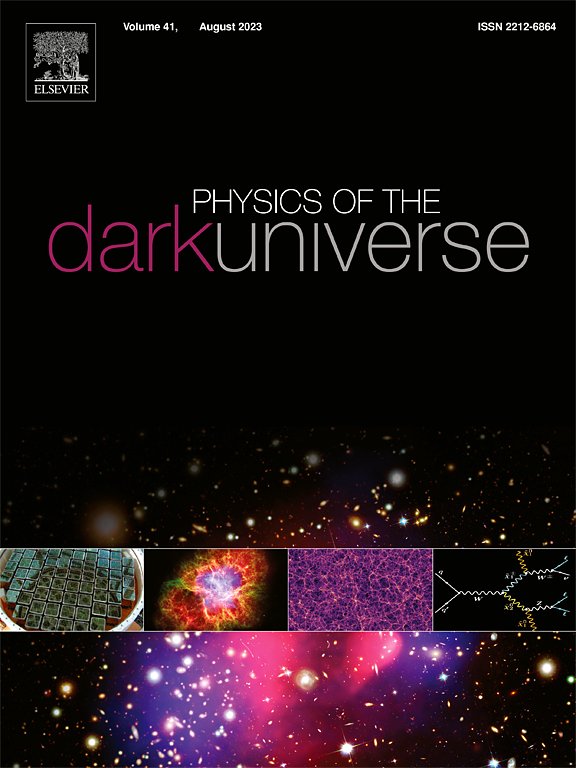Unified description of dark energy and dark matter candidates with the dark energy interiors
IF 5
2区 物理与天体物理
Q1 ASTRONOMY & ASTROPHYSICS
引用次数: 0
Abstract
We overview the systematic approach to the unified description of dark energy (DE) and a certain class of dark matter (DM) candidates represented by stress–energy tensors with the algebraic structure , qualified as a vacuum dark fluid. Most of the relevant solutions to the Einstein equations presented in the literature satisfy this condition. Regular solutions describe spacetimes with the non-zero background cosmological constant and de Sitter center surrounded by intrinsically anisotropic -dependent quintessence. Dependently on the choice of the reference frame, they describe the Lemaître class cosmological models with the initial and final de Sitter stages, and regular compact objects with the de Sitter centers. For a special class of Lemaître cosmological models the universe evolution is guided by the quantum evaporation of the cosmological horizon, which uniquely determines the non-zero final value of the vacuum energy density . Regular compact objects with the de Sitter centers include regular black holes, their remnants, whose existence is supported by spacetime symmetry, and self-gravitating solitons G-lumps replacing naked singularities. For a special class of regular rotating compact objects distinguished by the energy conditions, interiors contain regions of anisotropic -dependent phantom fluid. Regular primordial black holes, their remnants and G-lumps can be qualified as heavy DM candidates with DE interiors. Their observational signatures provide information about the matter content of their interiors.
求助全文
约1分钟内获得全文
求助全文
来源期刊

Physics of the Dark Universe
ASTRONOMY & ASTROPHYSICS-
CiteScore
9.60
自引率
7.30%
发文量
118
审稿时长
61 days
期刊介绍:
Physics of the Dark Universe is an innovative online-only journal that offers rapid publication of peer-reviewed, original research articles considered of high scientific impact.
The journal is focused on the understanding of Dark Matter, Dark Energy, Early Universe, gravitational waves and neutrinos, covering all theoretical, experimental and phenomenological aspects.
 求助内容:
求助内容: 应助结果提醒方式:
应助结果提醒方式:


